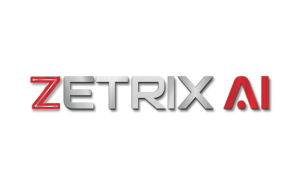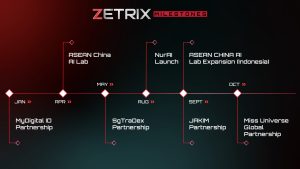Challenging Ethereum’s Gravity: Why the Future of L1s Lies in Purpose, Not Popularity
Zetrix reflects on Layer-1 design, modular trade-offs, and the real-world evolution of Web3
“No L1 will truly ‘win’ — instead, we’ll see functional specialization. Real-world use cases demand compliant, sovereign frameworks. Not just hype.”
— Dato’ Fadzli, Co-founder of Zetrix
In the 399th episode of Web3 Global Talks, industry builders gathered to debate a central question in blockchain’s evolution: Can Layer-1 chains realistically challenge Ethereum’s gravity? Or is the future more about interoperability than rivalry?
Representing Zetrix, Dato’ Fadzli brought a pragmatic, grounded perspective — one shaped not by speculative markets but by national infrastructure and enterprise integration.
Can Layer-1s Challenge Ethereum? Or Just Co-Exist?
Ethereum is a foundational pillar of Web3. But according to Dato’ Fadzli, its dominance is being reshaped, not necessarily dethroned by alternative L1s better suited for specific purposes.
“Ethereum’s TPS (Transactions-Per-Second) remains technically outpaced by many newer chains. But the challenge isn’t just performance — it’s use case viability and sustainability.”
Fadzli highlighted three key dimensions shaping L1 relevance:
- Scalability: Chains like Sui and Solana may outperform Ethereum on throughput, but adoption remains fragmented.
- Use Case Viability: Too many L1s chase trend cycles such as DeFi, memecoins and AI, without building enduring utility.
- Liquidity Fragmentation: Capital moves with hype. Sustainable ecosystems need value tied to real services like trade, identity, and legal infrastructure.
Zetrix, built as a permissioned public blockchain, is designed for precisely that — bridging government trust and blockchain decentralization without the chaos of open memecoin economies.
The Modular Shift: What Are We Really Trading Off?
The panel then turned to modularity and app-chain architecture. These innovations promise speed and specialization — but at what cost?
“Yes, we gain performance. But we’re losing composability and liquidity. Fragmentation is real,” Fadzli cautioned.
He compared today’s Web3 landscape to the early internet — fragmented, experimental, and largely incompatible. He called for a standardization of interchain messaging, akin to what HTTP did for the internet.
“Without verifiable messaging standards, bridges remain our weakest link. Every new modular innovation brings a new risk surface.”
For Zetrix, this shift is more than technical. It is political, regulatory, and social. Any meaningful integration of blockchain into national systems must prioritize data integrity, legal clarity, and institutional trust.
Real-World Use Cases Require Real Trade-Offs
Perhaps the most important takeaway was this: Not every app needs Ethereum’s level of replication. Not every user needs total decentralization.
“Zetrix isn’t building for DEX traders. We’re building for civil registries, customs systems, and digital identity platforms. Sovereignty, compliance, and verifiable data matter more than TVL (Total Value Locked).”
From Malaysia’s national digital identity pilots to ASEAN-wide trade and customs integrations, Zetrix continues to advocate for “real-world blockchain.”
Closing Thoughts
Fadzli’s closing call was clear:
“If you’re tired of chasing TVL charts, and you’re ready to work on something that actually matters — talk to us.”
At a time when many L1s are chasing the next hype cycle, Zetrix is quietly building the connective tissue between governments, enterprises, and the Web3 economy.
Learn More:





